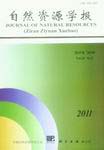Special Forum
LI Zong-li, HAO Xiu-ping, WANG Zhong-gen, LIU Xiao-jie, LI Hao
Presently, operating Interconnected River System Network (IRSN) is the new policy and strategy for guiding various water activities and ensuring the water safety in China. Generally speaking, the IRSN is a multi-factor, multi-scale and multi-function system with the prominent feature of extreme complexity and hugeness. While scientific classification of IRSN practices is the foremost and required issue, which aims at providing reliable basis for the researches and practices of IRSN activities. In the present paper, according to the property and essence of the IRSN, we first proposed five criteria for the classification of IRSN, namely scientificalness, systematicness, dominance, direction and maneuverability. Then, by considering the natural, economic and social properties of the IRSN practices, and also followed the above five criteria we comprehensively analyzed various factors concerning the IRSN, including the contention properties, contention functions, contention regions, contention scales, contention objectives, contention duration, contention pattern, and contention direction, and further established an IRSN classification system. Furthermore, based on the IRSN classification system established, we summed up and classed a large number of typical ISRN practices in China. Finally, we selected the connection property-based, connection function-based, and regional water resources character-based classification types, and discussed the contention characteristics, contention objective as well as several other main problems of the three classification types, respectively. The results gained from this paper can provide helpful guide for the researches and policy making about the IRSN activities in China in the future.
